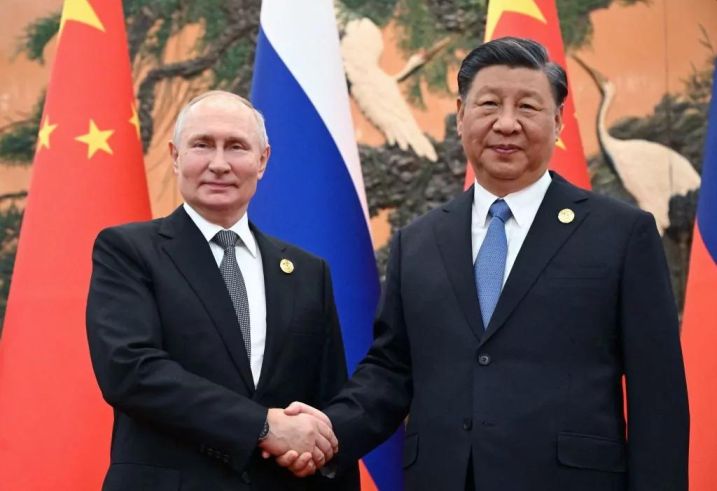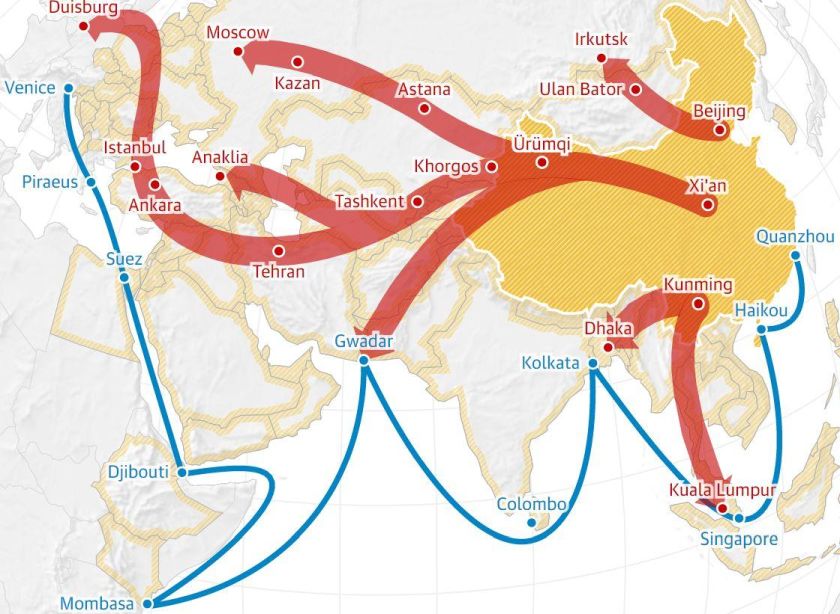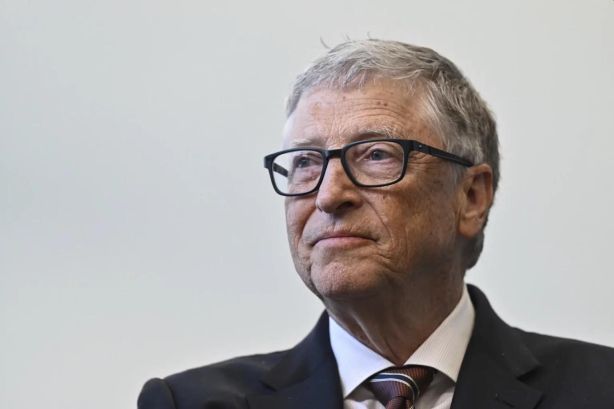By Eric Vandenbroeck and co-workers
The Belt and Road Initiative
As we reported it has been over 11 years since Chinese
President Xi Jinping announced the Belt and Road Initiative. Since
then, hundreds of billions of dollars have flowed from China to
infrastructure projects across the world, leaving some Western observers wary
of Beijing’s growing influence and critical of the United States for doing too
little to counter it.
From the initiative’s
beginning in 2013 until 2021, China had disbursed roughly $679 billion combined
to 165 countries to fund infrastructure projects, according to an October report published by the Government
Accountability Office. While China’s Belt and Road spending slumped during
the COVID-19 pandemic, a recent American Enterprise Institute
report found that construction activity associated with the
initiative jumped by 40% during the first half of 2024. A dashboard maintained by the AEI shows that China has already
spent tens of billions of dollars on projects in Asia, Africa, Europe, and
South America.
Belt and Road funding
comes primarily in the form of government-to-government loans to help
developing and developed nations alike fund a variety of infrastructure
projects. Energy-related projects have been China’s primary focus with its
investment, constituting 35% of Belt and Road spending between 2013 and 2021,
according to the GAO. Other major spending areas during that period included
$202 billion spent on transportation, $202 billion on industrial projects, $26
billion on communications infrastructure, and about $9 billion on water and
sanitation.
In the Chinese
government’s own words, the Belt and Road Initiative exists as a means to
develop a modern-day “Silk Road,” with China at the center of global commerce.
American policymakers
and foreign policy experts have long worried that China’s Belt and Road spending is being
used by the Chinese Communist Party to expand its global influence and alienate
the U.S. from its allies. Some have accused China of shackling developing
nations with debt and using that debt to extract political concessions. Others,
meanwhile, fear that embedding CCP loyalist corporations such as Huawei in the
infrastructure of other countries will increase global dependency on China and
undercut America’s economic influence. Concerns have also been floated that the
Belt and Road Initiative has given China access to strategic locations and
resources.

Countries like the
U.S. government is not blind to China’s global influence spending. In 2018,
Congress established the International Development Finance
Corporation to counter China’s infrastructure diplomacy. The DFC differs from
the Belt and Road Initiative in that it provides loans,
direct investments, loan guarantees, and risk insurance to private development
projects. The Belt and Road Initiative, meanwhile, operates primarily through
the Chinese government providing other governments with infrastructure loans.

Though DFC lending
has more than doubled since 2020, the GAO, the official watchdog
organization of the federal government, still warns that China is outpacing the
U.S. in development spending abroad.
While some estimates
place China’s foreign infrastructure spending at over $1 trillion, the combined
forces of the U.S. Agency for International Development, Commerce Department,
Export-Import Bank, State Department, DFC, Millennium Challenge Corporation,
and the U.S. Trade and Development Agency only spent about $76 billion on
foreign infrastructure projects between 2013 and 2021.
In response to the
GAO’s findings, DFC officials said they “adhere to high standards for labor and
the environment, are responsive to local needs, and improve a market’s overall
competitiveness … without increasing a nation’s sovereign debt.” The GAO identified
the higher standards required by Western sources as one factor pushing many
developing countries toward China.
Civil society
representatives interviewed by the GAO said China’s infrastructure investments
provide it with “greater political and diplomatic influence in their country.”
The Belt and Road
Initiative is also expanding its geographic footprint, adding several new
members, some of whom have close relations with the U.S., between 2021 and
2023. Argentina, Botswana, Afghanistan, Syria, Jordan, Honduras, Nicaragua, the
Democratic Republic of the Congo, and the Central African Republic were among
the new additions to China’s global infrastructure network.
There have, however,
been some recent high-profile defections from the Belt and Road Initiative. In
December 2023, for instance, Italy announced that it would be withdrawing from the
infrastructure program. Argentina, which signed a Belt and Road cooperation agreement with China
in June 2023, has also moved to distance itself from the CCP. Argentine
President Javier Milei campaigned on not making “pacts with communists” and has
since refused an invitation to join BRICS, a China-dominated
organization representing non-Western countries. Argentina and China, however,
still have strongly interconnected economies.
Not everyone in the
West opposes China’s global development program. The Ford Foundation, one of
the largest private charities in the world, has pumped roughly $10
million into supporting China’s strategy of funding foreign infrastructure
projects to accumulate influence. A spokesperson for the charity explained that
it hopes to help make China’s impact on the world “equitable” and
“sustainable.”
The Chinese Communist
Party doesn’t primarily use development loans to develop Global South
economies, it leverages them to export authoritarianism and create economic
dependency on Beijing. American foundations shouldn’t be furthering
those malign objectives.

The Gates Foundation,
led by Microsoft co-founder Bill Gates, similarly sent roughly $11.7 million to
arms of the Chinese government in 2023. On top of that, the Democratic
megadonor’s private philanthropy doled out $2 million to CRRC, a corporation
the Department of Defense has determined is under the control of the Chinese
military, and $6.7 million to state-run universities. Many of the Chinese
universities bankrolled by Gates and other left-of-center American
philanthropists have extensive ties to the People’s Liberation Army, conducting
research and entering into cooperation agreements with it.
The Rockefeller
family has also dipped its toes into supporting China, donating $7.4 million to
organizations that are either part of the Chinese government, led by members of
the CCP, or engaged in partnerships with China through its primary charitable arm
since 2020. Of the grants handed out by the Rockefeller Brothers Fund to
Chinese sources, most focused on helping China’s goal of transitioning to
low-carbon energy sources.
Gates’s charity has
been making similar disbursements for years, and Gates himself has long been a
proponent of China, saying in January 2023 that “China’s rise” has been “a huge
win for the world.”
Gates, joined by
other prominent American philanthropists such as Ray Dalio, founded the China Global
Philanthropy Institute in
2015 to support Chinese nonprofit organizations in helping their host country
“achieve sustainable impact.”
The Rockefeller family
has also dipped its toes into supporting China, donating $7.4 million to
organizations that are either part of the Chinese government, led by members of
the CCP, or engaged in partnerships with China through its primary charitable
arm since 2020. Of the grants handed out by the Rockefeller Brothers Fund to
Chinese sources, most focused on helping China’s goal of transitioning to
low-carbon energy sources.
Chinese influence in
the U.S. isn’t confined to the philanthropic sector. Companies affiliated with
the CCP and the PLA have spent tens of millions of dollars lobbying elected
officials for policy changes. Chinese nationals with links to state-run
intellectual property theft programs are working on government-funded research projects, and
America’s top tech firms hire armies of graduates from CCP-controlled
universities, at times leading to sensitive technology leaking to Beijing.
For updates click hompage here